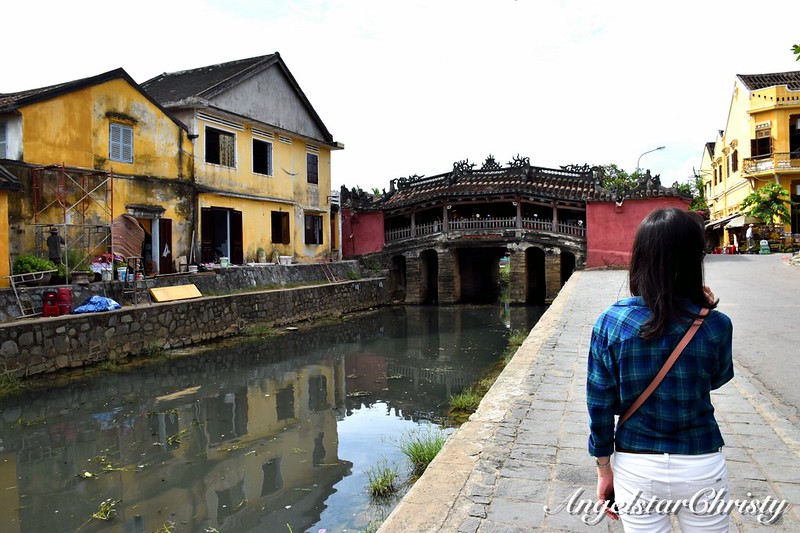
The well-preserved history of the ancient town of Hoi An comes with the many buildings, architectures, places and scenes which make up the stories and hold testament to the glory of the former commercial capital.
Walking around the town gives an insight into the trading days and culture taking place back then in the past.
Sometimes it even feels like time never stopped, and that it is still the early centuries when the town was still in brisk business and importance as the trading port intended by the ruling kingdom of the Cham.
An architecture of such prominence stands in the heart of the town; an iconic landmark of the historic town and one which is part of the early beginnings of the place.
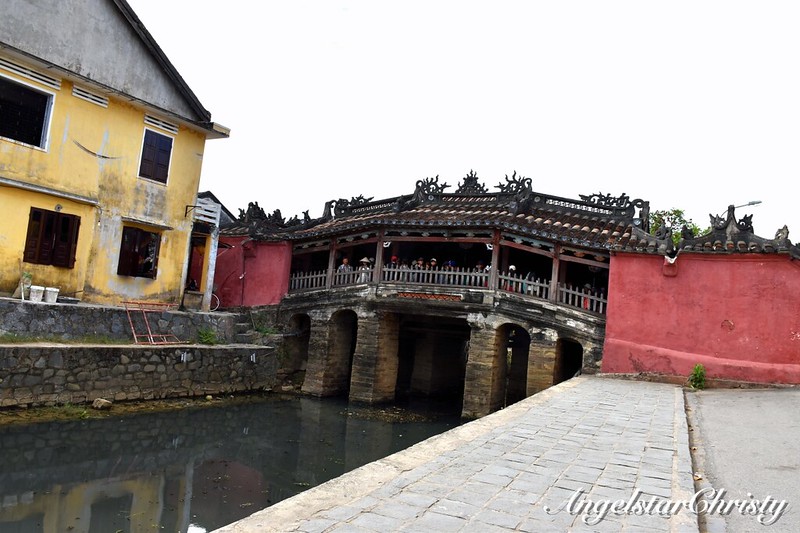
The Japanese Bridge, or Chua Cau is a living testimony to the presence of the foreign influences who stepped on the grounds; and the bridge is a piece left from the Japanese after which it is named and constructed, exemplary of the architectural design on the bridge itself.
The bridge was built in the 18th century, and was intended as a connecting passageway between the Japanese residents in the town of Hoi An to the Chinese traders living on the other side of the town, separated by the water.
It was during the 16th and 17th century when the trading with the Chinese took prominence among others such as the Portuguese, Dutch, Japanese and the Indians; and the Thu Bon River rose as an important trading point with the mouth of the river marked as the hub of all the activities.
The town of Hoi An was then known as Hai Pho by the local Vietnamese; which means "Seaside Town".
Then the town was divided; with the Japanese settlement on the side of the town and the traders on the other.
The connection between both parties was enabled with the establishment of the bridge by the Japanese.
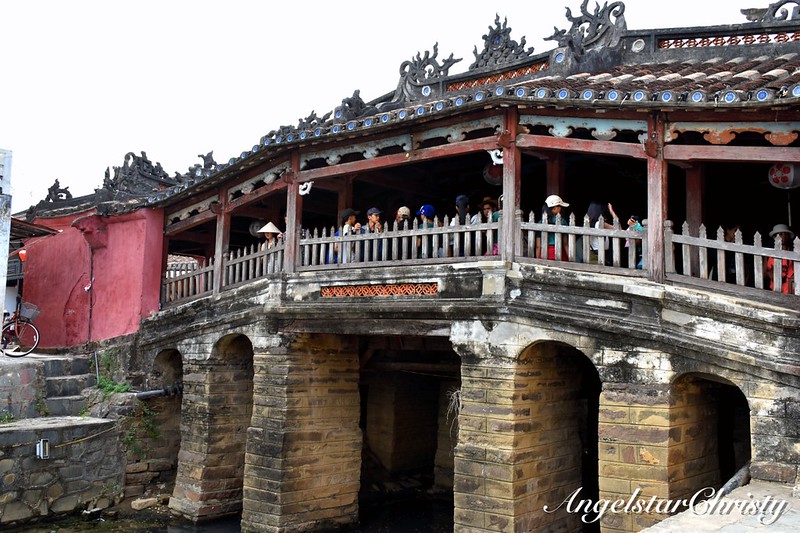
The Japanese Bridge is a local attraction today; and while it was meant to connect the divided town, the bridge is also unique as the only covered bridge with a Buddhist temple/pagoda attached to the side.
The bridge is iconic as the town's landmark as its prominent and beautiful Japanese ornamental design stands out in striking contrast to the Vietnamese and Chinese architecture present on most of the buildings around here.
On one end of the bridge, there are sculptures of two animals; dog and monkey, symbolic of the Chinese zodiac years in which most of the Japanese emperors were said to be born.
The other meaning behind the two animals are said to relate to the year of the commencement of the bridge's construction which was said to be in the year of the dog and the completion of the bridge in the year of the money.
Another story surrounding the bridge's purpose is of a rather spiritual nature; in which it was said to fend against a dragon monster; or a 'mamazu'; which the Japanese believed was responsible for the calamities in their homeland especially earthquakes.
The monster was said to span in length, with its head located in India and its tail in Japan, and the location of Vietnam (Hoi An) in the middle, was believed to be where its back is and building a bridge on top of its back is said to hold it down; preventing it from wrecking havoc further.
The temple at the end of the bridge is dedicated to the God of Weather, or also known as the Northern God Tran Vo Bac De.
The Japanese Bridge was officially opened by the visiting Lord Nguyen Phuc Chu; of the reigning Nguyen family then in 1719 in which he carved three Chinese characters above the door of the bridge; Lai Vien Kiu, translated to mean the Bridge for Passengers from Afar.
It is indeed fascinating; knowing that such a simple covered bridge holds such a whole lot of interesting stories while standing as the pride of the historical town.
While the town itself is already surrounded by stories everywhere, the bridge holds fort to being an important landmark and marks the heart of the connecting point to the early beginnings of the town.
Surrounded by all the intricate decorations and architectures evident of the Vietnamese and Chinese style on the nearby buildings, the simplicity of the Japanese design stands out and steals the hearts of them all.

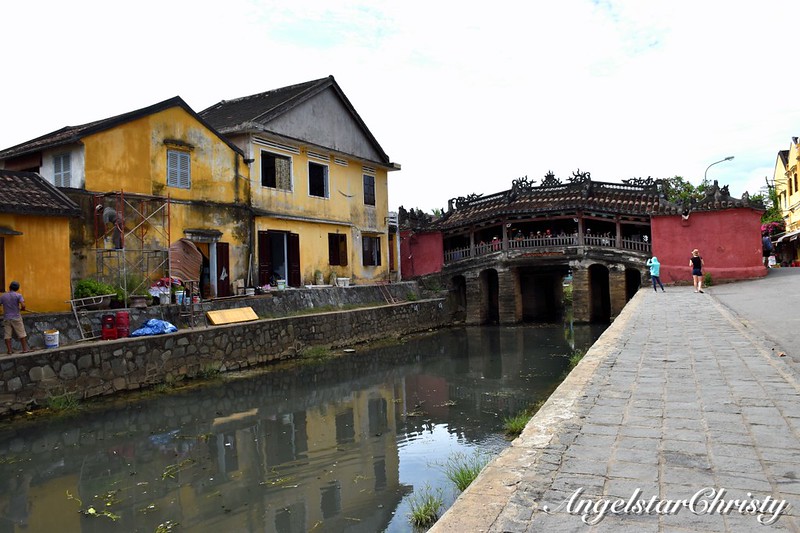
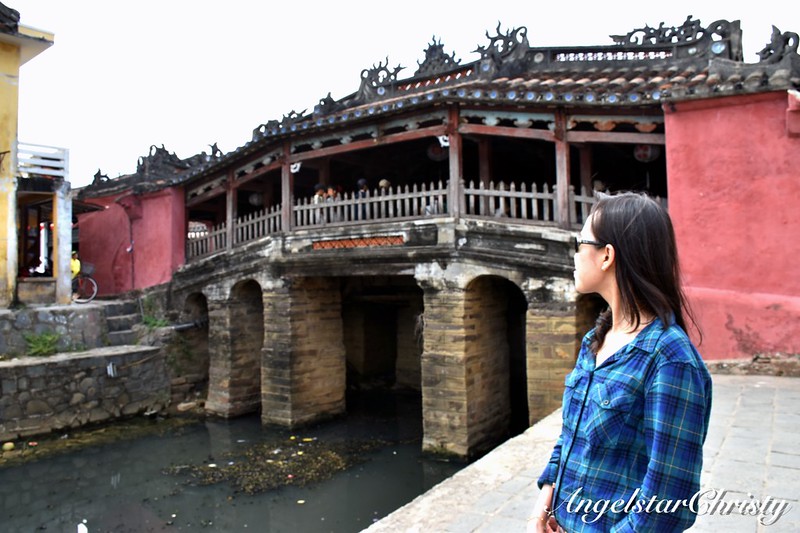
You do not have to agree with me.
Art Direction and Photography Styling by Me.
Photos/Videos all belong to me and are copyrighted.
Please kindly ask for permission if you need to use any of my images.
Check out my Pinterest @Angelstarc
Follow me on my live updates on my life, happening on SNAPCHAT @angelstarchrist



0 comments